With the GeForce RTX 3060 Ti FE (Founders Edition) introduced today, NVIDIA shrinks the GA104, which we already know from the GeForce RTX 3070, even further. In terms of surface area, the chip is of course just as large or small, but also slightly trimmed. Still higher yield and thus a better availability, a similarly good efficiency as with the RTX 3070 and evenly also still somewhat more favorably in the production. To what extent the GeForce RTX 3070 FE now has to fear, we’ll see right away.
The omens aren’t even bad, even if NVIDIA will soon have to compete with AMD’s Radeon RX 6700 XT. But in the end, only the square counts and the front yard has been busily planted with software and features since the introduction of Ampere. Whether the casual gamer will be able to appreciate these additional features at all is of course another matter. Because he mostly just wants to play.
The NVIDIA GeForce RTX 3060 Ti FE is based on the GA104-200 and is even faster than a current GeForce RTX 2080 Super in many aspects, but is priced in with a RRP of 399 euro. For the GeForce RTX 3060 Ti, NVIDIA has activated a total of 38 SM units, resulting in a total of 4864 CUDA cores. In addition to CUDA cores, NVIDIA’s GeForce RTX 3060 Ti is also equipped with next-generation RT cores (ray tracing), Tensor cores, and the all-new SM or streaming multiprocessor units. As far as memory is concerned, the GeForce RTX 3060 Ti also has 8 GB of GDDR6 memory with a speed of 14 Gbps, which has a cumulative bandwidth of 448 Gbps on the 256-bit interface.
If you now extrapolate the 38 SM, the already mentioned 4864 CUDA cores result. Ideally and only if all units are allowed to work with FP32. The gap to the GeForce RTX 3070 is plausible, there is certainly no graphics card that fits in between. As a counterpart for a Radeon RX 6700 XT, which at least in terms of rasterization should be rated more highly, such a further slimmed down GA102 would certainly be an option, but this is purely speculative and could later be realized together with more memory than a supersized RTX 3070, in whatever process.
So it’s really exciting to see what NVIDIA is now offering as a complete package, so today (and also at the Radeon launches), I’m going to explore not only the gaming environment, but also the production area. Because only then can a product really be justified. This also applies to the electrical conversion, the circuit board, power consumption and cooling. Reading material is therefore already provided.
The GeForce RTX 3060 Ti Founders Edition
Now it goes straight to the preserves without any frills. The case of the card is, as always, analogous to the GeForce RTX 3070, a pretty clever mix of light metal, plastic and hardware, which feels great and valuable and also looks good, but is still kept a bit simpler than its bigger sisters. The design with the 3.5 cm installation depth plus the 4 mm backplate makes this card a small and cute dual-slot design with all known advantages and disadvantages. It looks really good, feels valuable and you can really like the visual implementation.
With its 1021 grams, the card is almost a lightweight. The length of 24.5 cm is nice and short, and the installation height of 10.5 cm from the upper edge of the PCIe slot with installed card to the top of the cover is quite low. The funny 12-pin Micro-Fit 3.0 on the top side is this time installed horizontally and points to the back. Here you can connect the included 12-pin adapter to which the two conventional 6+2-pin plugs fit, which you have known for years. You will see on the next page the board that you can almost shoot at sparrows with cannons. You can find more details about the cooler design there. Nvidia logically left out the NVLINK port. SLI is dead anyway, and not really wanted.
NVIDIA has once again abandoned the USB Type C on the slot panel, probably also because the VR hype has cooled down considerably in the meantime. Interestingly, AMD has added this feature to Big Navi, while it seems to have already finished here. The new HDMI 2.1 connection should not be missing, and of course the three current DisplayPorts. The very large cooling openings show where the wind is blowing from and with that we would be completely finished with the exterior.
The data of the Founders Edition is shown again in the current GPU-Z screenshot, the rest I already mentioned above. The 1410 MHz base and the 1665 MHz boost clock are already as well known as the 1750 MHz memory clock and the memory expansion with 8 GB on the 256-bit interface.
Here I also have a table for all statisticians among you, before it really gets going on the next page.
| Graphics card | RTX 3090 | RTX 3080 | RTX 3070 | RTX 3060 Ti |
|---|---|---|---|---|
| Architecture | GA102 | GA102 | GA104-300 | GA104-200 |
| Transistors billion | 28.3 | 28.3 | 17.4 | 17.4 |
| The size mm² | 628.4 | 628.4 | 392.5 | 392.5 |
| SMs / CUs | 82 | 68 | 46 | 38 |
| GPU cores | 10496 | 8704 | 5888 | 4864 |
| Tensor cores | 328 | 272 | 184 | 152 |
| RT Cores | 82 | 68 | 46 | 38 |
| Base Clock MHz | 1395 | 1440 | 1500 | 1410 |
| Boost Clock MHz | 1695 | 1710 | 1725 | 1665 |
| VRAM Speed Gbps | 19.5 | 19 | 14 | 14 |
| VRAM GB | 24 | 10 | 8 | 8 |
| VRAM Bus Width | 384 | 320 | 256 | 256 |
| ROPs | 112 | 96 | 96 | 80 |
| TMUs | 328 | 272 | 184 | 152 |
| Bandwidth Gbps | 936 | 760 | 448 | 448 |
| TBP Watts | 350 | 320 | 220 | 200 |
Test system and evaluation software
The benchmark system is new and is now no longer in the laboratory, but back in the editing room. I now also rely on PCIe 4.0, the matching X570 motherboard in the form of a MSI MEG X570 Godlike and a selected Ryzen 9 3900XT, which is water cooled and overclocked up to 4.5 GHz. In addition, there is the matching DDR4 3600 RAM from G.SKILL in the form of the TridentZ Neo, as well as several fast NVMe SSDs. For direct logging during all games and applications I use NVIDIA’s PCAD, which increases the comfort tremendously.
The measurement of power consumption and other things takes place here in the special laboratory on a redundant and identical in every detail test system then double-tracked using high-resolution oscillograph technology…
…and the self-created, MCU-based measurement setup for motherboards graphics cards (pictures below), where in the end the thermographic infrared images are also taken with a high-resolution industrial camera in an air-conditioned room. The audio measurements take place outside in my chamber.
I have also summarized the individual components of the test system in tabular form:
| Test System and Equipment |
|
|---|---|
| Hardware: |
AMD Ryzen 9 5950X O CMSI MEG X570 Godlik e2x 16 GB Corsair DDR4 4000 Vengeance RGB Pr o1x 2 TByte Aorus (NVMe System SSD, PCIe Gen. 4 )1x 2 TB Corsair MP400 (Data )1x Seagate FastSSD Portable USB- CBe Quiet! Dark Power Pro 12 1200 Watt |
| Cooling: |
Alphacool Ice Block XPX Pr oAlphacool Ice Mincer (modifie d)Thermal Grizzly Kryonaut |
| Case: |
Raijintek Paean |
| Monitor: | BenQ PD3220U |
| Power Consumption: |
Oscilloscope-based system: Non-contact direct current measurement on PCIe slot (riser card)N on-contact direct current measurement at the external PCIe power supplyDi rect voltage measurement at the respective connectors and at the power supply unit2x R ohde & Schwarz HMO 3054, 500 MHz multichannel oscilloscope with memory function4 x Rohde & Schwarz HZO50, current clamp adapter (1 mA to 30 A, 100 KHz, D C)4x Rohde & Schwarz HZ355, probe (10:1, 500 MHz)1x Rohde & Schwarz HMC 8012, HiRes digital multimeter with memory f u nctionMCU-based shunt measuring (own build, Powenetics soft ware)Up to 10 channels (max. 100 values per sec ond)Special riser card with shunts for the PCIe x16 slot (P E G)NVIDIA PCAT and FrameView 1.1 |
| Thermal imager: |
1x Optris PI640 + 2x Xi400 Thermal Imager sPix Connect Softwar eType K Class 1 thermal sensors (up to 4 channels) |
| Acoustics: |
NTI Audio M2211 (with calibration file )Steinberg UR12 (with phantom power for the microphones )Creative X7, Smaart v. 7Own anechoic chamber, 3.5 x 1.8 x 2.2 m (LxDxH) Axial measurements, perpendicular to the centre of the sound source(s), measuring distance 50 c mNoise emission in dBA (slow) as RTA measuremen tFrequency spectrum as graphic |
| OS: | Windows 10 Pro (all updates, current certified or press drivers) |
- 1 - Einführung und Testsystem
- 2 - Teardown, Platinenanalyse und Kühler
- 3 - Gaming Performance Full-HD
- 4 - Gaming Performance WQHD
- 5 - Detailauswertungen alle Spiele
- 6 - Workstation: CAD
- 7 - Studio: Rendering
- 8 - Studio: Video- und Bildbearbeitung
- 9 - Leistungsaufnahme und Effizienz der Einzelspiele
- 10 - Leistungsaufnahme: Übersicht & Netzteil-Empfehlung
- 11 - Temperaturen und Infrarot-Tests
- 12 - Geräuschemission / Noise
- 13 - NVIDIA Broadcast - Mehr als nur eine Spielerei?
- 14 - Zusammenfassung. Features und Fazit














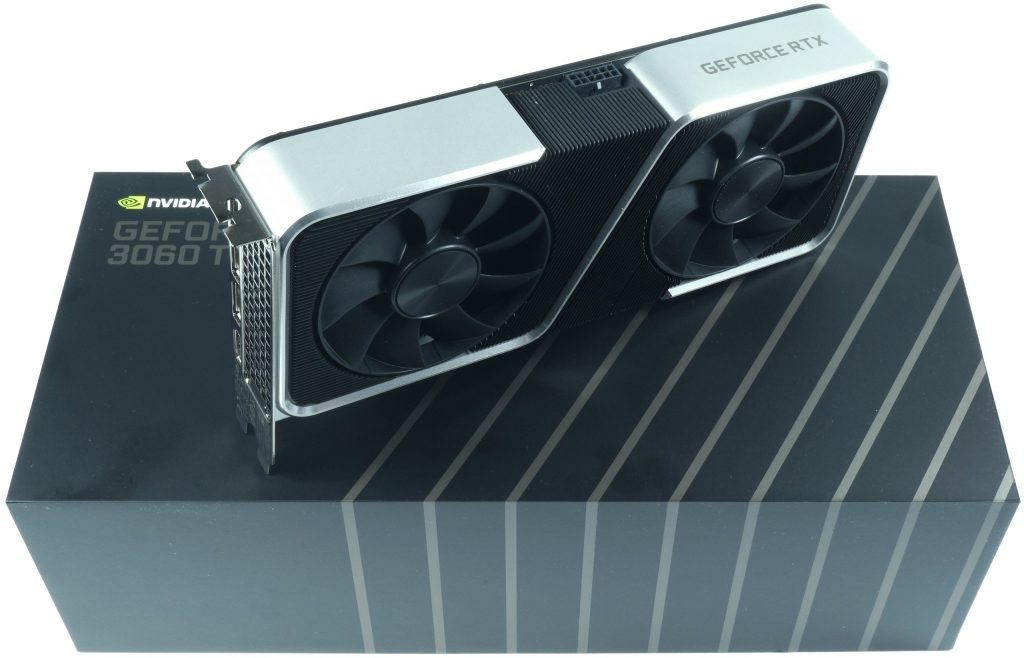
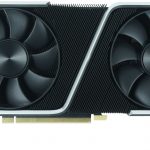
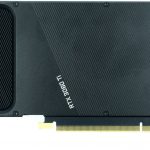
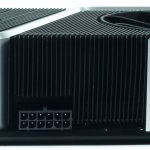
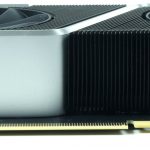

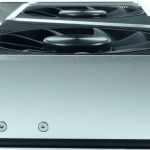
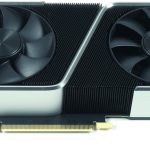
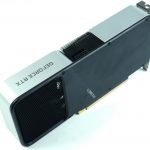
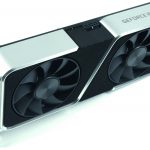
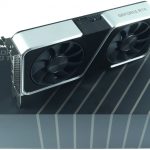
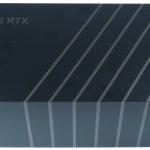


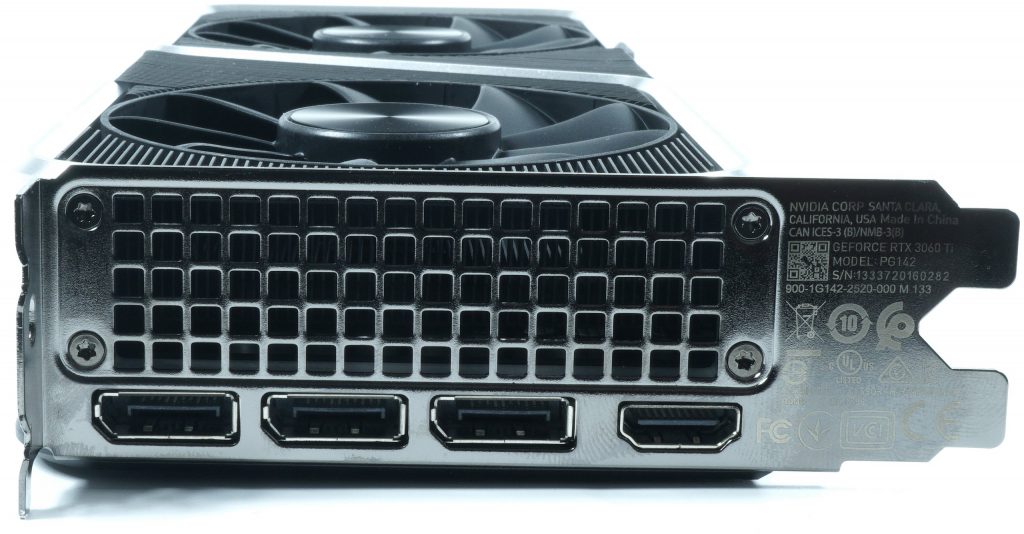

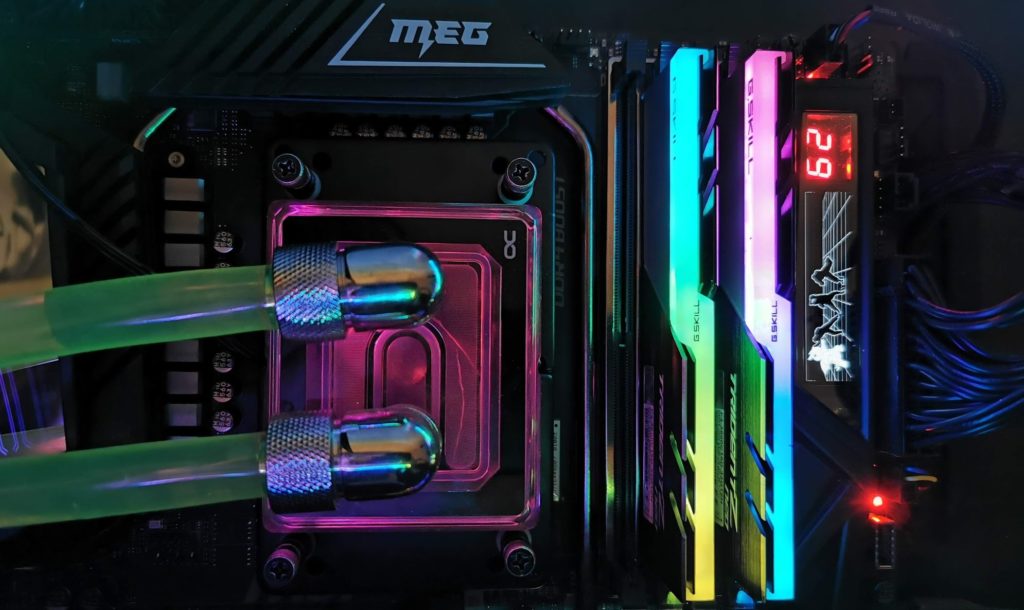
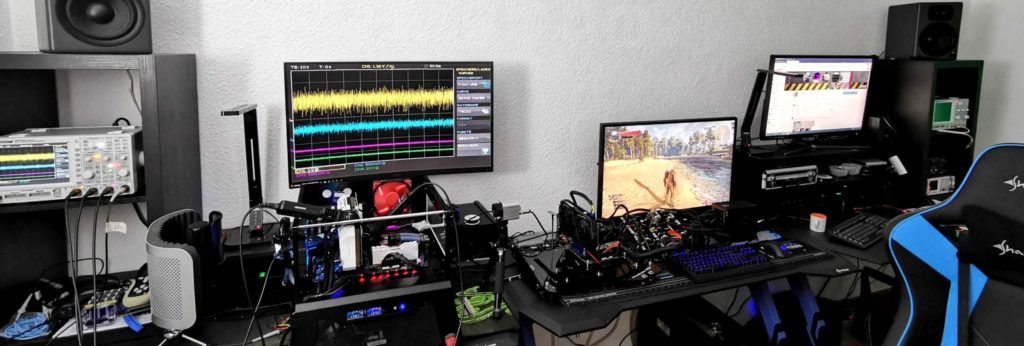
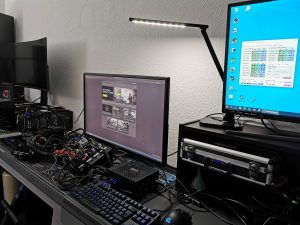
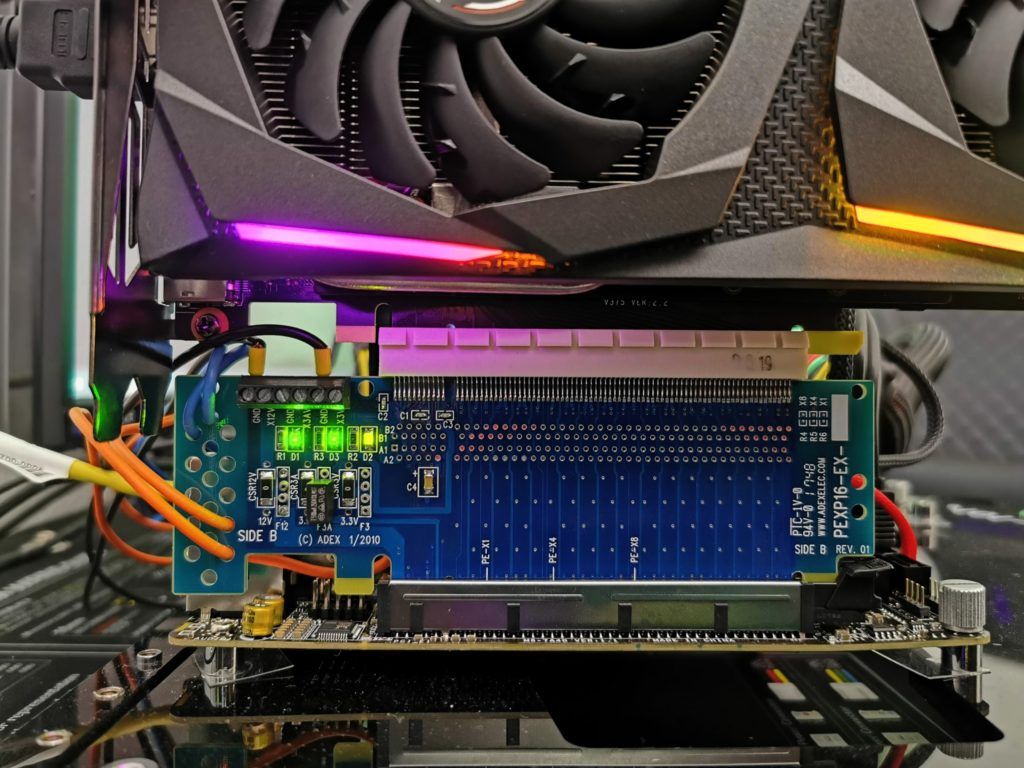
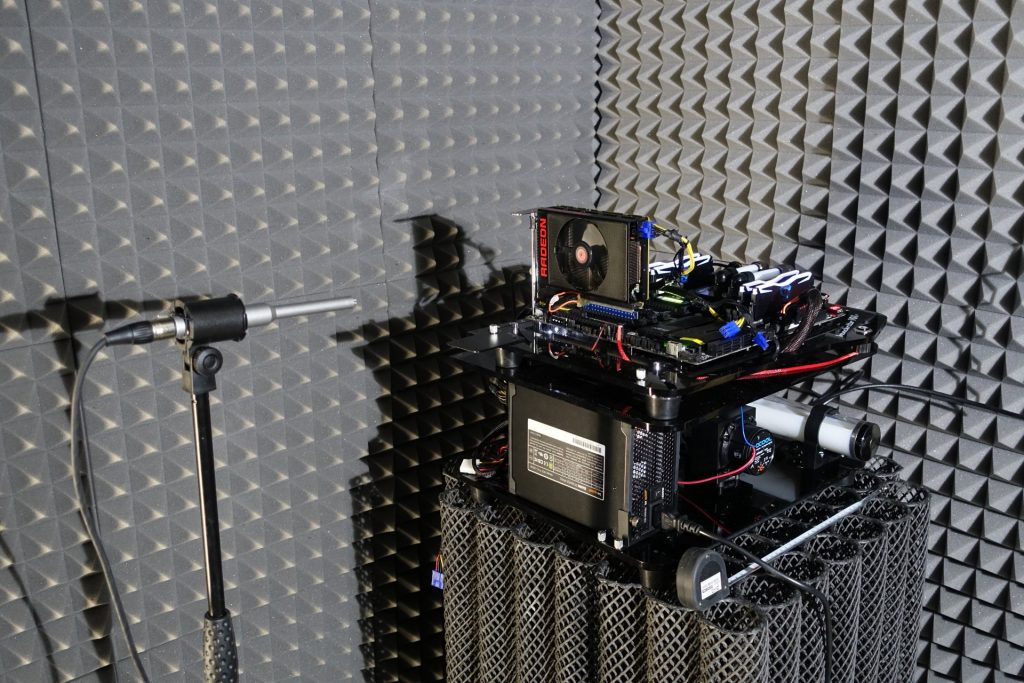




















Kommentieren